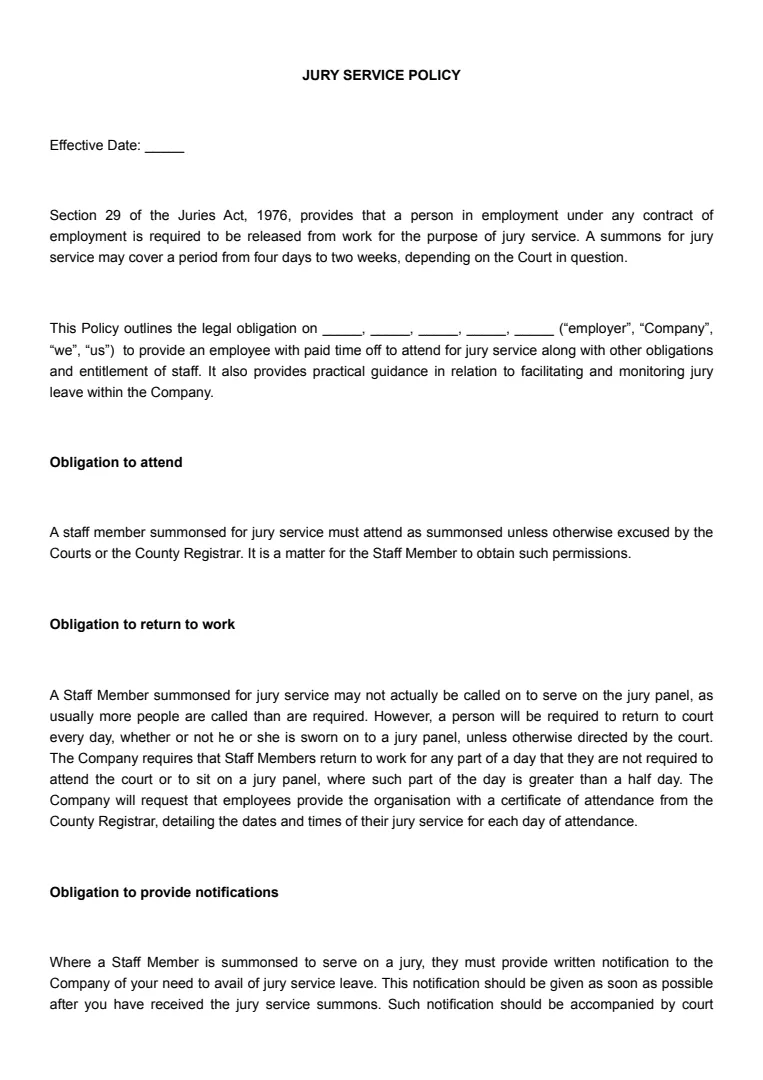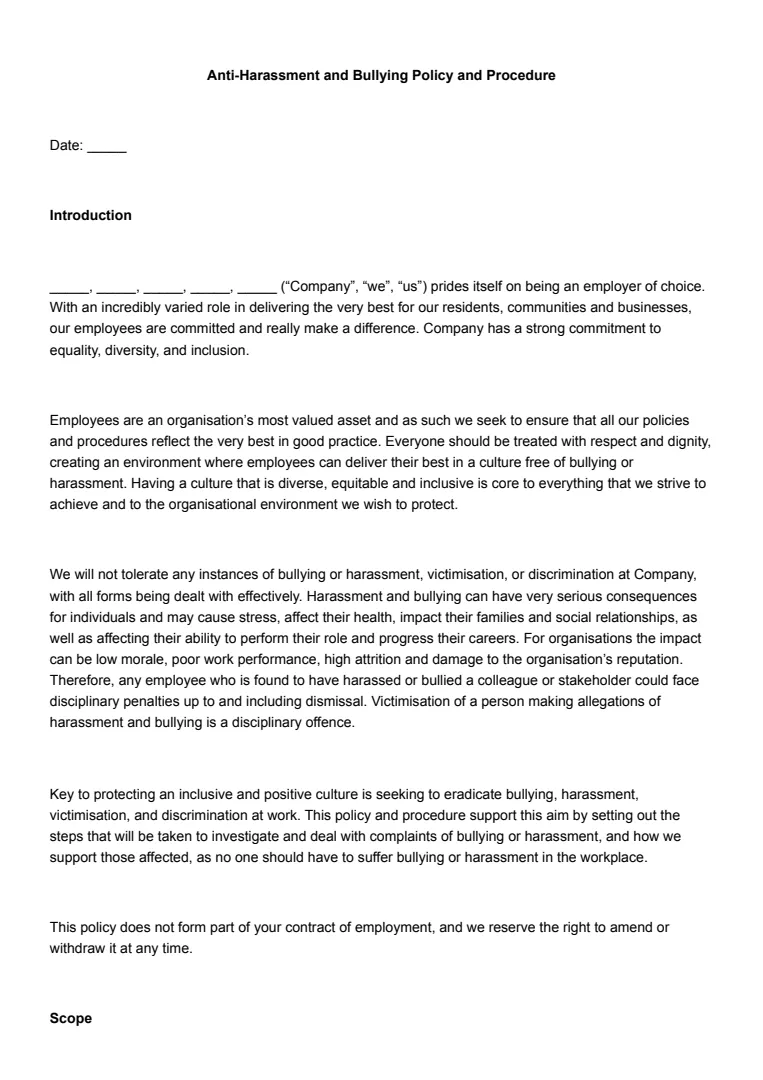What Is an Equal Opportunities Policy?
An equal opportunities policy is your company's commitment to fairness and equal treatment in the workplace.
This policy serves as a framework to ensure everyone gets a fair shot, regardless of their background or characteristics.
You might think of it as a safeguard against discrimination. This includes factors like age, disability, gender reassignment, and race in line with the UK Equality Act 2010.
The idea is to create a workplace where everyone feels included and respected.
Why have one? It helps signal to employees that certain behaviours will not be tolerated.
When implemented well, these policies can improve employee morale and foster a sense of community and inclusivity. They’re not just about avoiding legal trouble; they’re about building a supportive work environment.
When crafting a policy, you typically include a list of what it covers. Examples include hiring practices, workplace behaviour, and processes for addressing grievances.
The policy must be clear and accessible to everyone in your organisation, whether they’re temporary, part-time, or full-time workers.
This document acts as a guide, outlining your company's values and expectations. It helps everyone understand what behaviour is acceptable and unacceptable.
When Is an Equal Opportunities Policy Needed?
Legislative Compliance
If you're in a country with anti-discrimination laws, like the UK, you'll definitely need an equal opportunities policy.
This aligns your workplace practices with legal requirements, ensuring that all employees, from hiring to promotion, are treated fairly and without bias.
Diverse Workforce
In workplaces with a broad mix of cultures, genders, and backgrounds, having a policy is crucial.
It helps navigate the complexities of managing a diverse team, ensuring everyone knows what's acceptable behaviour and what isn't.
Recruitment and Hiring
For businesses looking to attract a wide range of job applicants, it's a good idea to implement this policy.
It reassures candidates that fairness is a core company value and that they'll be assessed based on merit alone.
Workplace Conflicts
If you've experienced discrimination or harassment issues at work, this policy can serve as a guide to resolving these problems.
It sets a clear framework for how grievances should be handled, protecting both employees and the company.
Corporate Image
Establishing an equal opportunities policy can improve how your company is perceived externally.
It sends a strong message to potential partners and clients that you prioritise equality and fairness, enhancing your reputation as a socially responsible business.
Development of Internal Policies
When developing broader company guidelines or behavioural codes, this policy can form a solid foundation.
It ensures that all new policies adhere to principles of equality and fairness, aligning with overall business goals.
How to Write an Equal Opportunities Policy
Creating an equal opportunities policy is an essential step for fostering an inclusive workplace.
Here’s how to get started on crafting your document.
Step 1: Outline the Policy Objectives
Decide what you want to achieve with this policy. Focus on promoting fairness and eliminating discrimination in the workplace.
Clarify that you’re committed to treating all employees and job applicants equitably.
Step 2: Define Your Scope
Specify the areas of employment the policy covers. This might include recruitment, training, promotion, and work conditions.
Make sure it’s clear who the policy applies to, whether it’s all employees, contractors, or potential hires.
Step 3: Gather Input From Stakeholders
Involve managers and employees in the process. Their insights can be valuable for ensuring the policy is practical and relevant to the team.
Collaborating with HR or a legal advisor can also help refine the document.
Step 4: Draft the Policy Details
Clearly state your commitment to equality. Outline unacceptable behaviours like discrimination or harassment.
Detail the steps the organisation will take to promote diversity and inclusion.
Ensure the language is concise and easily understood.
Step 5: Set Responsibilities
Identify who is responsible for implementing and overseeing the policy. This could include managers or HR personnel.
Make sure everyone knows their role in maintaining an inclusive environment.
Step 6: Create a Procedure for Addressing Grievances
Explain how complaints will be handled and resolved.
Ensure there’s a process for employees to report concerns safely and confidentially.
Step 7: Review and Update Regularly
Policies should evolve with the company and societal standards.
Set a schedule to revisit and revise the policy, taking feedback and new legislation into account.
Step 8: Promote the Policy Internally
Once finalised, share it widely across your organisation.
Use staff meetings, emails, and training sessions to ensure everyone understands the policy and its importance.
You can also use an equality and diversity policy template to help guide you towards writing a robust policy.













